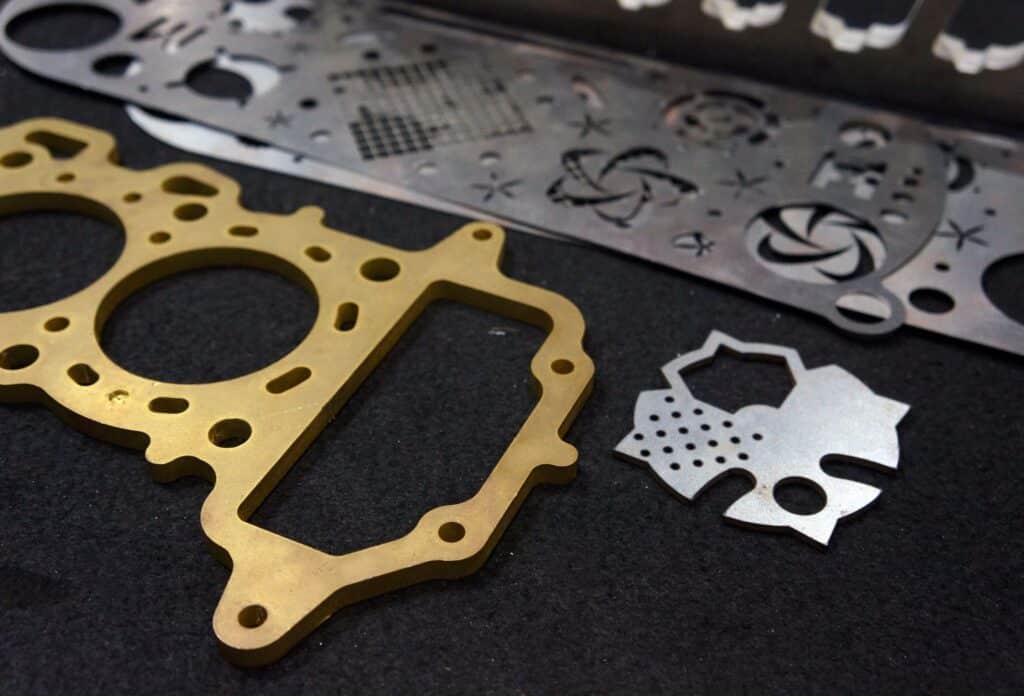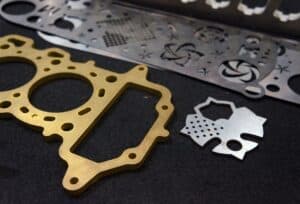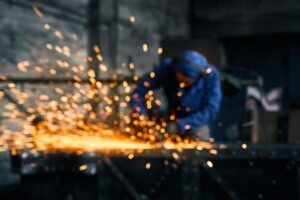Operation-based stamping is a process carried out in the metallurgical industry and is fundamental, as it enables the creation of highly precise and complex components. From tiny parts for the electronics industry to larger parts for the automotive sector, this technique facilitates processes across a wide range of applications.
At Bericht we are experts in the manufacturing of metal parts, and in this guide we explain everything about this widely used technique in our field.
What is metal stamping?
The metal stamping process is a method for manufacturing metal parts in which a press and dies are used to shape metal sheets, turning them into components with the desired shape and characteristics.
This process is carried out through a series of sequential operations including cutting, drawing, bending, stretching, embossing, and punching. The main goal is to transform the metal sheet into a useful and functional piece for later use in various industrial sectors.
Metal part operation-based stamping process
Operation-based stamping of metal parts involves a series of sequential steps performed using specialized presses and dies. This process is known for achieving highly precise finishes on complex components with intricate details.
Types of operations in metal stamping
This process is divided into 6 phases described below:
- Cutting: involves separating the metal piece from the original sheet using a die and a punch. The punch applies pressure to the sheet, cutting the metal and creating the desired shape.
- Drawing: cavities or concave shapes are formed in the metal sheet by pressing it against a die with a specific shape. The metal deforms and takes the shape of the die, creating cavities or indentations in the part.
- Bending: angles and curves are formed in the metal part. A die and punch are used to apply pressure at specific points on the sheet, causing it to bend into the desired shape.
- Stretching: the metal piece is lengthened or stretched to achieve a specific shape. A die and punch apply force in opposite directions, stretching the metal.
- Embossing: this involves creating raised or recessed patterns on the metal surface using a die with the desired design and a punch to press the metal.
- Punching: holes are made in the metal part. A sharp punch applies pressure to the sheet, cutting precise holes into the material.
Materials used in stamping
In the operation-based stamping process, various materials may be used depending on the requirements of the part. Steel is commonly used for its strength and versatility. Aluminum offers lightness and good thermal conductivity.
Brass, an alloy of copper and zinc, is widely used in plumbing fittings. Zinc and its alloys, such as zamak, are also known for their workability. Nickel alloys provide excellent corrosion resistance. Though less common, titanium can also be used for its strength and light weight.
The choice of material depends on electrical and thermal conductivity as well as the strength needed for each application.
Advantages and applications of metal stamping
The metal stamping process offers numerous advantages compared to other metal part manufacturing methods. Here are the most notable:
- It allows for the creation of high-precision parts with very exact dimensions.
- It is a highly efficient process, capable of producing parts at high speed.
- Offers the ability to create various shapes and sizes.
- The production cost per unit is relatively low.
- It is easy to produce large quantities of identical parts.
These advantages make this process one of the preferred choices for manufacturers.
Industrial sectors benefiting from metal stamping
This method offers numerous benefits in part manufacturing processes, which is why several sectors rely on it. Examples include:
- Automotive: bodies, chassis, interior and exterior panels, and engine parts.
- Appliances: front panels, covers, and structural components.
- Electronics: connectors, chassis, housings, and brackets.
- Aerospace: structures, panels, and fasteners.
- Construction: beams, profiles, plates, and fasteners.
The manufacturing process using operation-based stamping provides significant advantages and stands out among other systems for its precision, speed, and quality of results. For this reason, many industries choose this system to manufacture their components.
Frequently Asked Questions about Operation-Based Stamping
1. What is operation-based stamping in the metallurgical industry?
Operation-based stamping is a manufacturing process where presses and dies are used to shape metal sheets. This method transforms sheets into parts with specific shapes and features through a series of sequential operations such as cutting, drawing, bending, stretching, embossing, and punching.
2. What materials are commonly used in metal stamping?
In metal stamping, various materials are used depending on the final piece’s requirements. The most common are steel, aluminum, brass, zinc and its alloys (like zamak), nickel, and sometimes titanium. Material selection is based on strength, thermal and electrical conductivity, and workability.
3. What are the main advantages of metal stamping compared to other manufacturing methods?
Metal stamping offers several important advantages:
- High precision and dimensional accuracy.
- Efficiency and speed in part production.
- Ability to create various shapes and sizes.
- Low unit production cost.
- Capability to produce large quantities of identical parts effortlessly.
4. Which industrial sectors benefit the most from metal stamping?
Several industrial sectors benefit from metal stamping, including:
- Automotive: for bodies, chassis, panels, and engine parts.
- Appliances: for front panels, covers, and structural components.
- Electronics: for connectors, chassis, housings, and brackets.
- Aerospace: for structures, panels, and fastening elements.
- Construction: for beams, profiles, plates, and fasteners.
5. What types of operations are performed in the metal stamping process?
The metal stamping process is divided into six main phases:
- Cutting: separating the metal piece from the original sheet.
- Drawing: forming cavities or concave shapes in the sheet.
- Bending: creating angles and curves in the metal part.
- Stretching: lengthening the metal to obtain a specific shape.
- Embossing: creating raised or recessed designs on the metal surface.
- Punching: creating holes or perforations in the metal part.
6. How is the right material selected for a stamped part?
The selection of the right material for a stamped part is based on several factors:
- Physical properties: such as strength, durability, and ductility.
- Thermal and electrical properties: such as heat and electrical conductivity.
- Mechanical properties: such as workability and corrosion resistance.
- Specific industry requirements: Each sector has specific needs that may influence the material choice, such as lightness for aerospace or strength for automotive.




